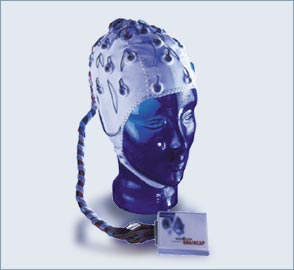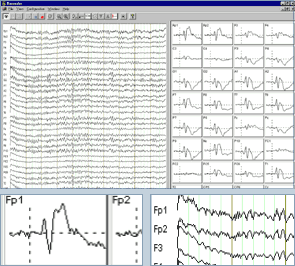The first recording of the electric field of the human brain was made by the German psychiatrist Hans Berger in 1924 in Jena. He gave this recording the name electroencephalogram (EEG). (Berger, 1929).(From 1929 to 1938 he published 20 scientific papers on the EEG under the same title "Über das Elektroenkephalogram des Menschen".) Spontaneous activity, evoked potentials, and bioelectric events produced by single neurons deserve special attention.
Spontaneous activity is measured on the scalp or on the brain and is called
the electroencephalogram. The amplitude of the EEG is about 100 µV when
measured on the scalp, and about 1-2 mV when measured on the surface of the
brain. The bandwidth of this signal is from under 1 Hz to about 50 Hz, as
demonstrated in Figure 13.1. As the phrase "spontaneous activity"
implies, this activity goes on continuously in the living individual.
Evoked potentials are those components of the EEG that arise in response to
a stimulus (which may be electric, auditory, visual, etc.) Such signals are
usually below the noise level and thus not readily distinguished, and one
must use a train of stimuli and signal averaging to improve the signal-to-noise
ratio.
Single-neuron behavior can be examined through the use of microelectrodes
which impale the cells of interest. Through studies of the single cell, one
hopes to build models of cell networks that will reflect actual tissue properties.
Brain Computer Interface


